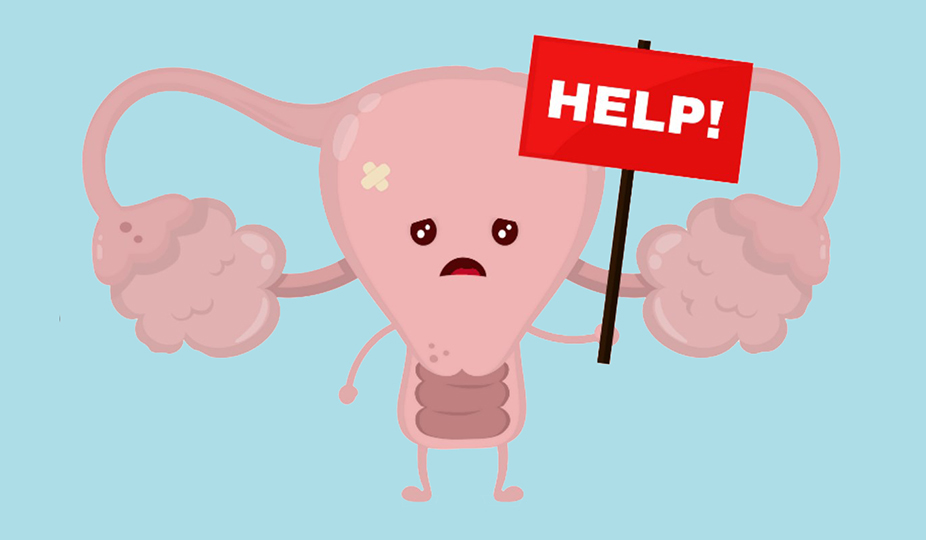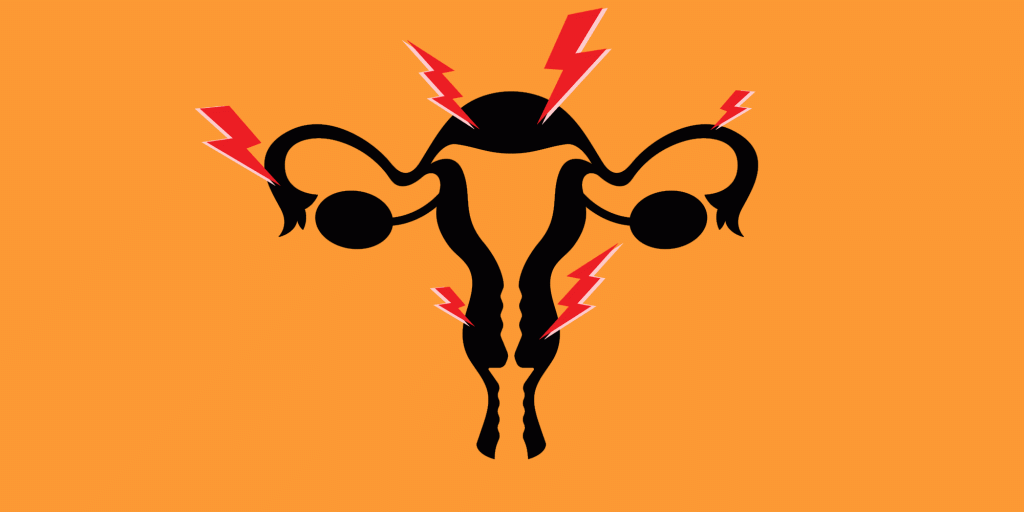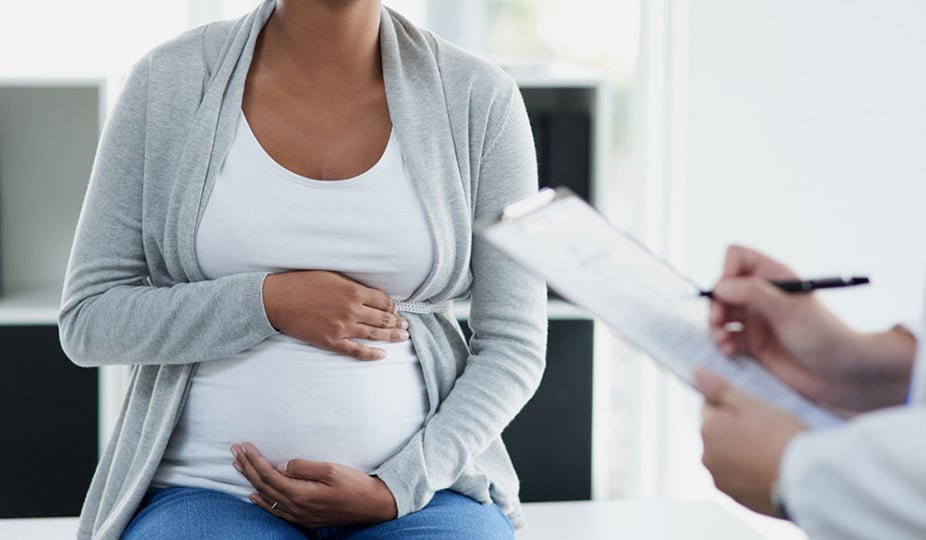Endometriosis Infertility – Pregnancy Chances, Stats, Causes & Treatment Ways
No woman is immune from the manifestation of endometriosis. This disease significantly complicates conception and can lead to complete endometriosis infertility.

Even though endometriosis occurs in every third woman of reproductive age, the disease remains a big mystery for far many doctors. There are about ten theories about how endometriosis arises and develops. However, no single theory explains the enormous variety of forms and sites of pathology.
Let’s start with endometriosis definition to make out all the details of the disease.
What is Endometriosis?
Endometriosis is an immune-dependent and genetically determined disease, manifested by the proliferation of uterine mucous membrane cells outside this layer.
For some not entirely clear reasons, endometrial cells begin to behave queerly. In excess, it grows in the body of the uterus, on other genitals – on the cervix, in the tubes, ovaries, or even begins to “travel” around the body, and it might come to entirely unexpected and inappropriate places for it:
- in the intestine;
- urinary tract;
- lungs;
- in the tissues of the eyes.

Everything would be fine, but the endometrium is a particular tissue, which is conceived by nature for the reception of a fertilized egg and these purposes. At the beginning of the cycle, the endometrium actively grows and thickens under the influence of the hormone estrogen.
At about the 15th day of the cycle, another hormone connects to the process: endometrial tissues begin to secrete a lot of mucus, the vessels dilate and become full-blooded. If conception did not occur – by the end of the cycle, the content of both hormones sharply decreases, the overgrown layer of the endometrium collapses – so menstruation begins.
Furthermore, excessive growth of the endometrium inside the uterus or its presence in other organs leads to the pathology. And the name of it is endometriosis. Like the normal mucous membrane of the uterus, tissues grow at the beginning of each cycle and collapse during menstruation. It can lead to the formation of adhesions and endometrial cysts.
What are the Symptoms of Endometriosis Infertility?
In most cases, especially in the early stages of development, endometriosis has no manifestations. It comes to the fact that doctors are not even sure about the approximate figures and methods of an endometriosis infertility diagnosis. Thus without a precise visual examination, it is possible to suspect endometriosis, but it is challenging to confirm.

If you start “feeling” endometriosis, then its growth has already reached a significant size. Endometriosis symptoms may be as follows:
- progressively increasing pain, especially noticeable before or during menstruation;
- discomfort and discomfort during intercourse;
- pain during defecation;
- presence of spotting bleeding before the onset of menstruation;
- short menstrual cycle (polymenorrhea);
- the existence of blood in the urine (hematuria);
- infertility.
For any such symptoms, you should immediately contact a specialist. Otherwise, it can lead to infertility and removal of the uterus. If you have doubts or already have endometriosis diagnosed, you can consult one of our fertility experts and find out the timely treatment of the condition.
What Causes Contribute to the Development of Endorminosis Infertility
According to the statistics, endometriosis infertility affects an estimated 176 million women worldwide.

Doctors are inclined to believe that the leading cause of endometriosis is hormonal disorders. The majority of the examined women revealed an excess of luteinizing hormone (LH), prolactin, and one more hard-spelling hormone (FSH). Progesterone level remains reduced. Any hormonal processes affecting the menstrual cycle, touch the endometrium, which begins to inflame and due to this increase in size.
More factors contributing to the development of endometriosis infertility:
- increased exercise during the menstrual cycle;
- the mental state of a woman – overstrain, stress, etc.;
- blood stasis in the uterus;
- sexual intercourse during menstruation;
- genetic factors;
- atresia of the cervical canal and retroflection;
- surgical intervention and possible complications;
- any infectious inflammatory processes in the uterus, appendages, and ovaries;
- malfunction of the immune system.
There are additional causes that can significantly increase the chance of occurrence and growth of endometriosis infertility:
- abortion and spontaneous termination of pregnancy;
- cesarean section;
- ecology problems;
- obesity of any stage;
- long-term use of an intrauterine device;
- liver disease.
This disease is overwhelmed with a bunch of frightening myths. For example, you cannot have sex during menstruation and stand on your head, as the blood will return to the fallopian tubes. Please be careful and avoid such kind of misleading information.
Is there any Chance to Get Endometriosis Infertility Cured?
There is no single endometriosis medication, whereas it is possible to manage its symptoms through a combination of long term treatment. Treatment of endometriosis will depend on dozens of factors established during the diagnosis. Most notable are endometriosis causes, the form of the disease, the place of growth, the degree of growth, pregnancy, or its planning.

Diagnostic methods for endometriosis are far not informative, but in some cases, they can confirm the assumption of the presence of the condition. Therefore, you might commonly face the following diagnostic methods:
- ultrasound examination of the abdominal cavity on the eve of menstruation;
- general analysis of blood, urine, taking a sample for tumor marker CA 125;
- taking vaginal smears for pathology and tissue biopsy;
- magnetic resonance imaging (MRI) of the pelvic region;
- uterus hysteroscopy;
- colposcopy;
- laparoscopy;
- metrosalpingography (MSH).
Today, there are two main methods of treating a disease: hormonal and surgical. Considering that in most cases, the hormonal background of a woman affects endometriosis, doctors prescribe hormone therapy. Among the drugs can be gestagens, antigonadotropins, and combined hormonal drugs. Often doctors prescribe multivitamin complexes to women with endometriosis.
Endometriosis Medication

Let’s dig into more remedies that endometriosis infertility medication includes:
- Hormonal contraceptives. Birth control pills, patches, and vaginal rings help control the hormones responsible for the monthly growth of endometrial tissue. Most women who use hormonal contraceptives make their periods less and shorter. Hormonal contraceptives, especially with a long course of treatment, can reduce or even eliminate pain with mild or moderate endometriosis.
- Antagonists of gonadotropin-releasing hormone. These drugs block the production of hormones that stimulate the ovaries, reducing the level of estrogen, and preventing menstruation. So they help the endometrial tissue to thin. Moreover, such therapy creates artificial menopause. Taking small doses of these medicines can reduce such unpleasant manifestations of menopause like hot flushes, vaginal dryness, and weakening of bones. Menstruation and the ability to conceive will recover after discontinuation of drugs.
- Progestin therapy. Progestin contraceptives, such as intrauterine devices, contraceptive implants or injections, can stop the growth of tissue, which helps to alleviate symptoms of the disease.
- Danazol. This drug inhibits the growth of the membrane, inhibiting the production of hormones that stimulate the ovaries, preventing manifestations of endometriosis. However, danazol can not be the drug of choice, because it can cause several side effects, including the unborn baby if taken during pregnancy.
With medium and massive growth, the most effective way is a surgery that helps to remove the largest centers of growth. The most commonly used method is laparoscopy – the most benign type of surgical intervention for today.
Laparoscopy
Laparoscopy is the preferred surgical approach (“gold standard“) in the treatment of the disease. Regardless of the severity and extent of the pathological process, it contributes to better visualization of the lesions due to their optical magnification, minimal tissue trauma, and rapid rehabilitation of patients. The laparoscopic approach is used to treat small forms of the disease.
The basic principle of this method in the treatment of ovarian endometriosis is the preservation of the ovarian reserve. That makes gentle treatment of the ovarian tissue (technically possible) with the most significant removal of foci of endometriosis.
Conservative surgery
If a patient wants to become pregnant, there is a method to remove the endometriosis foci without involving the uterus and ovaries.
Such an operation can alleviate the condition, reduce pain, but the manifestations may eventually return. To minimize the operating injury, we can use intervention to be performed laparoscopically – through punctures of the abdominal wall and under video control.
Hysterectomy
In severe cases of endometriosis, the best solution may be to remove the uterus along with the cervix and two ovaries. A simple hysterectomy is not sufficient because the estrogens produced by the ovaries help maintain the disorder and preserve pain.
Removal of the uterus is usually considered a last resort, especially for women of reproductive age. After the hysterectomy, it is no longer possible to have children.
Endometriosis and Pregnancy
Endometriosis is not always a hindrance to pregnancy, especially in the initial stages of the disease. But over time, the signs of untreated pathology are aggravated:
- endometrial cells form cysts on the ovaries;
- depletion of follicular functions occurs;
- adhesions develop that impede the progress of the egg.

These processes prevent the development of a pregnancy, may be complicated by an ectopic pregnancy. So the egg is unable to penetrate the uterus due to adhesions in the fallopian tubes.
Ovarian endometriosis and pregnancy are two mutually exclusive concepts. The presence of this disease often becomes one of the reasons for the inability to conceive a child.
In the early stages of the disease, pregnancy can occur. But this is undesirable for the patient since the affected ovary will not be able to release enough hormones for the full development of the fetus.
- spontaneous abortion;
- birth of a dead child;
- pre-eclampsia;
- congenital abnormalities;
- complicated childbirth and postpartum problems;
- formed cysts can cause immediate surgery.
Doctors advise planning to conceive as soon as possible after treatment. It is essential not to delay, because reduced or surgically removed lesions may return.
If there is still a problem with endometriosis pregnancy even after several years of treatment, doctors suggest you undergo an IVF. It means fertilization of the egg outside of the wonam`s body, followed by infusion of the embryo into the woman’s uterus.
IUI, IVF, and Surrogacy to Treat Endometriosis Infertility
Today, IUI and IVF egg fertilization are alternative ways to conceive a baby if you have endometriosis. During IUI the sperm of your partner or donor gets right to the uterus and makes it easier to get pregnant. IVF in combination with the right hormonal treatment can help you get pregnant and give birth to a child if done by professionals. Depending on the type and stage of your condition, the doctor can either use your or donor eggs. If you want to know which treatment would be more effective for you – consult our experts for free and get the answers.
The incubator, in which there are fertilized eggs and developing embryos, only simulates the conditions inside the woman’s body. The further development of embryos that occurs in the uterus, after an embryo transfer into the woman’s body, follows the general laws of nature. Today, this procedure helps a large number of couples.
Endometriosis Infertility Outlook
Good news: with a treatment plan and pain management strategies taking as early as possible most people can get their endometriosis under control. If time is lost, there is a need for surgical intervention, and often – for removal of ovaries and uterus.
Good news: with a treatment plan and pain management strategies taking as early as possible most people can get their endometriosis under control. If time is lost, there is a need for surgical intervention, and often – for removal of ovaries and uterus.
Accordingly, in this case, the answer to the question of whether it is possible to become pregnant with endometriosis and give birth becomes negative.
We can only insist on taking care of your immunity! You know how to do this: proper nutrition, vitamins, adequate physical exertion, less stress, regular rest, and a sense of the joy of being.
